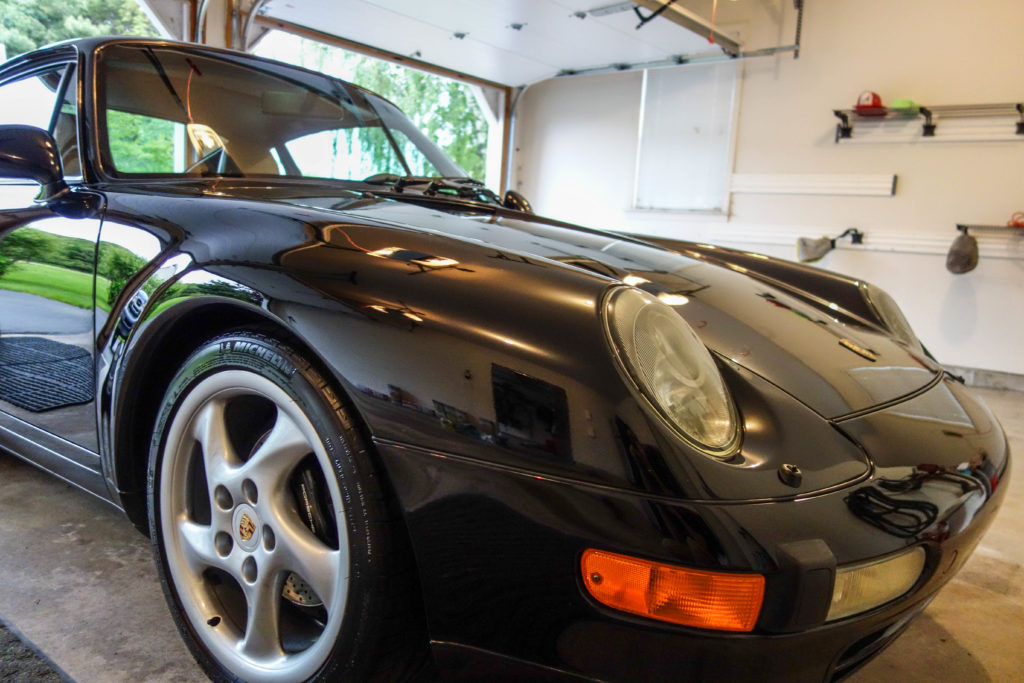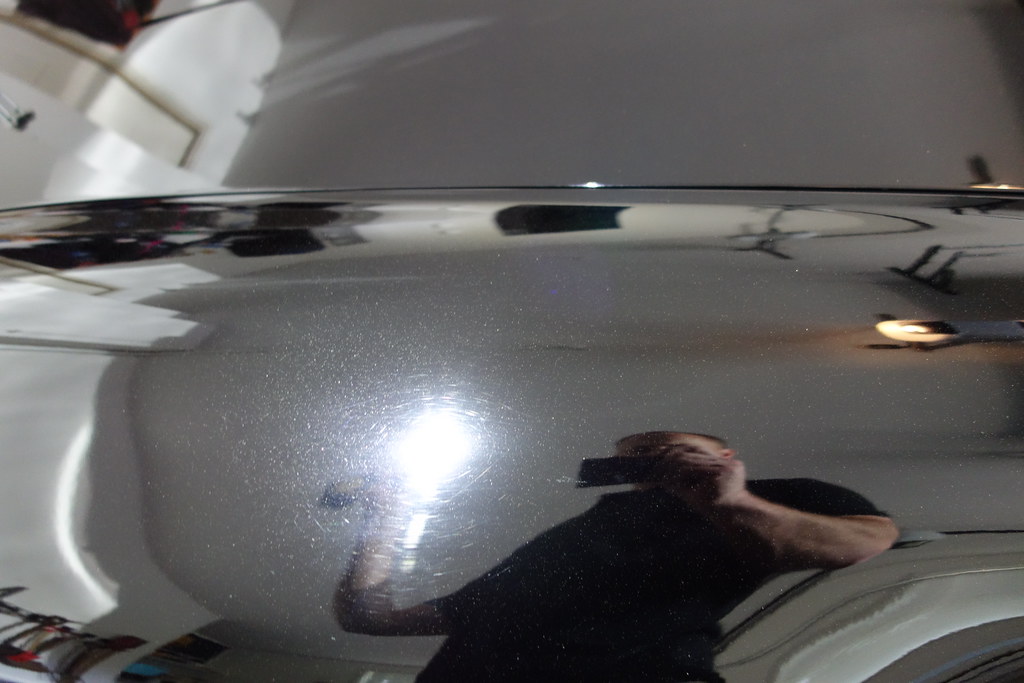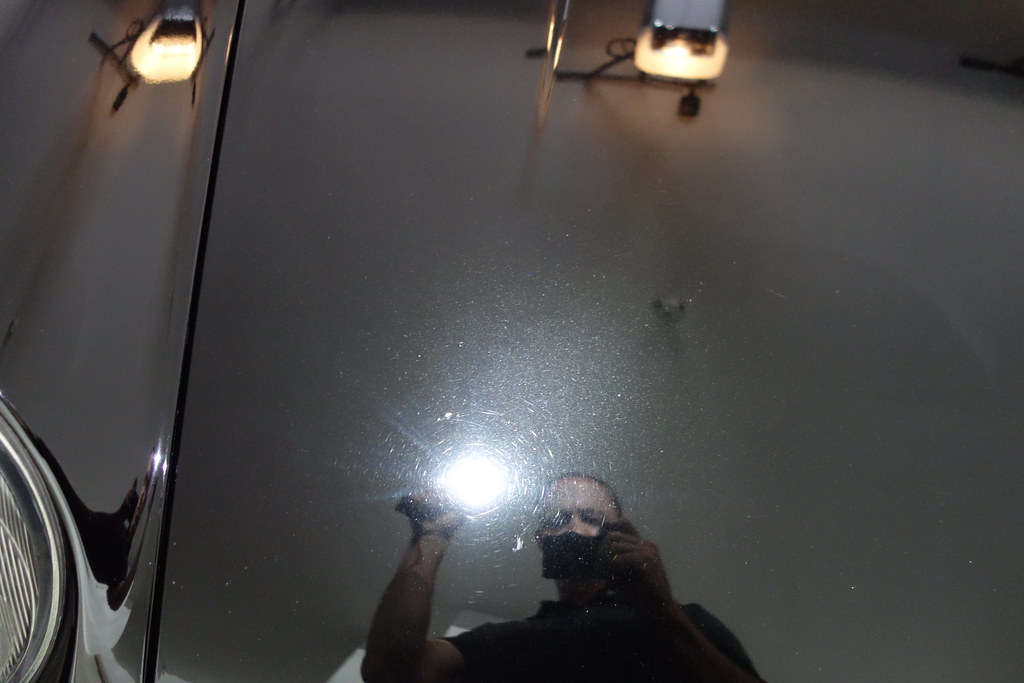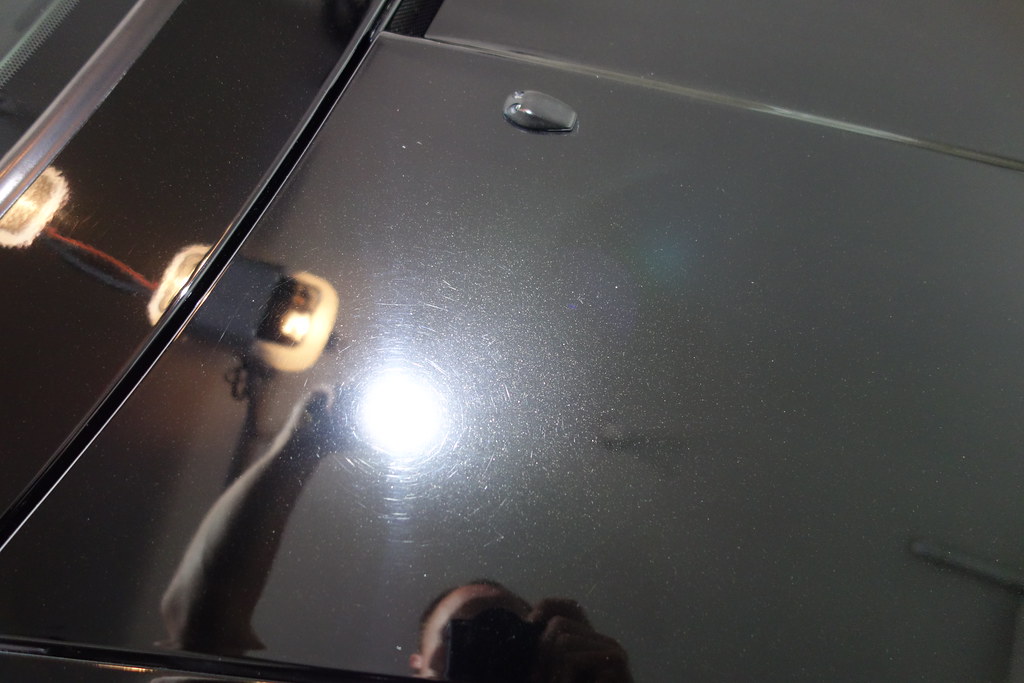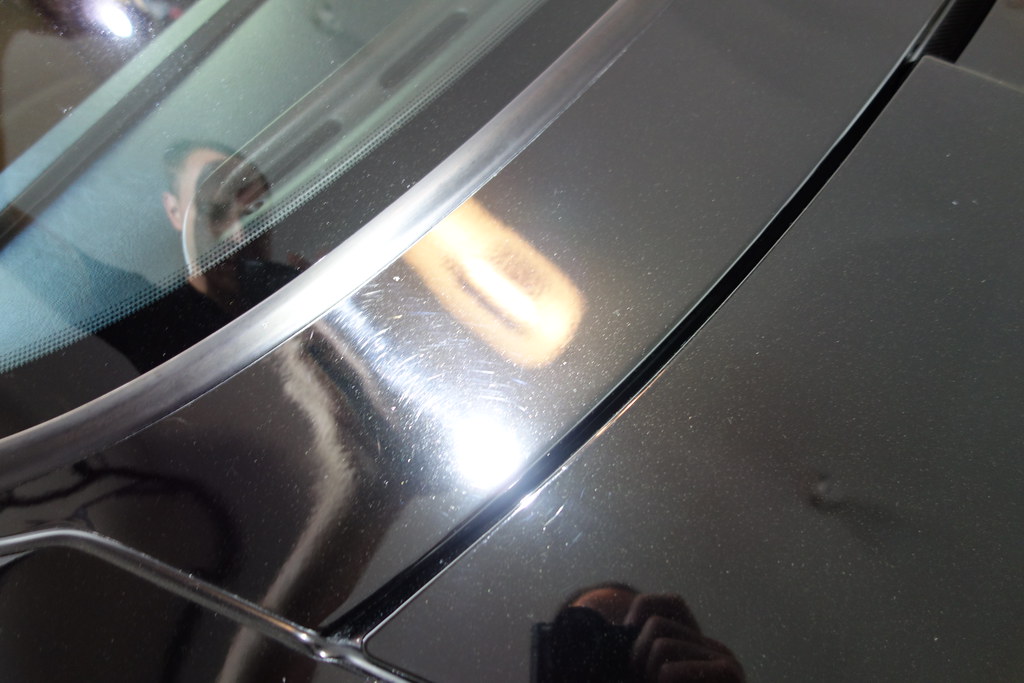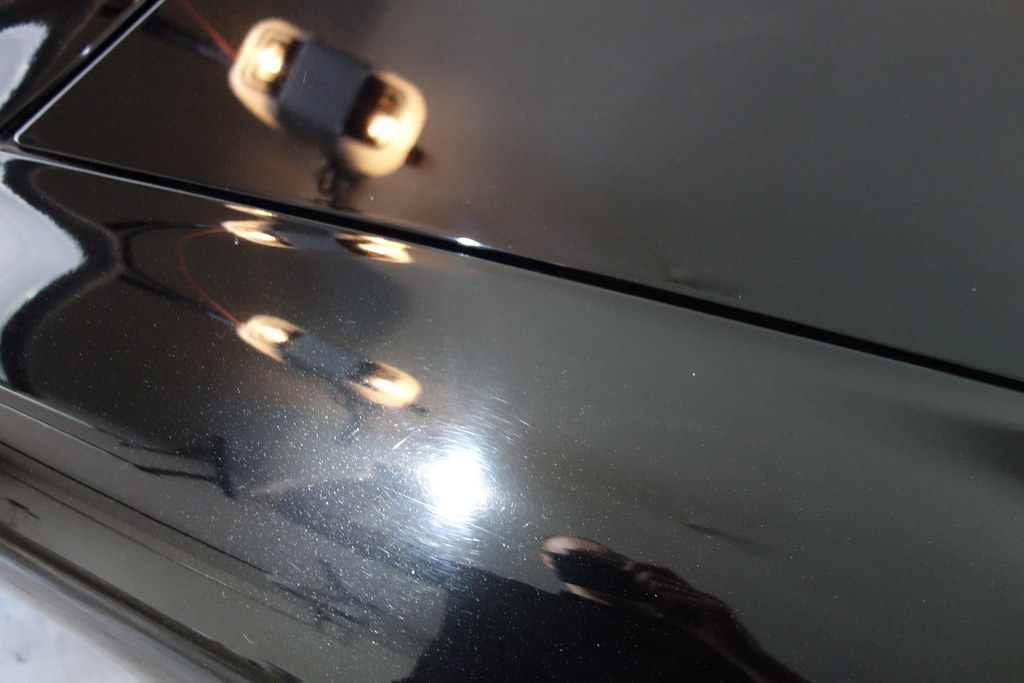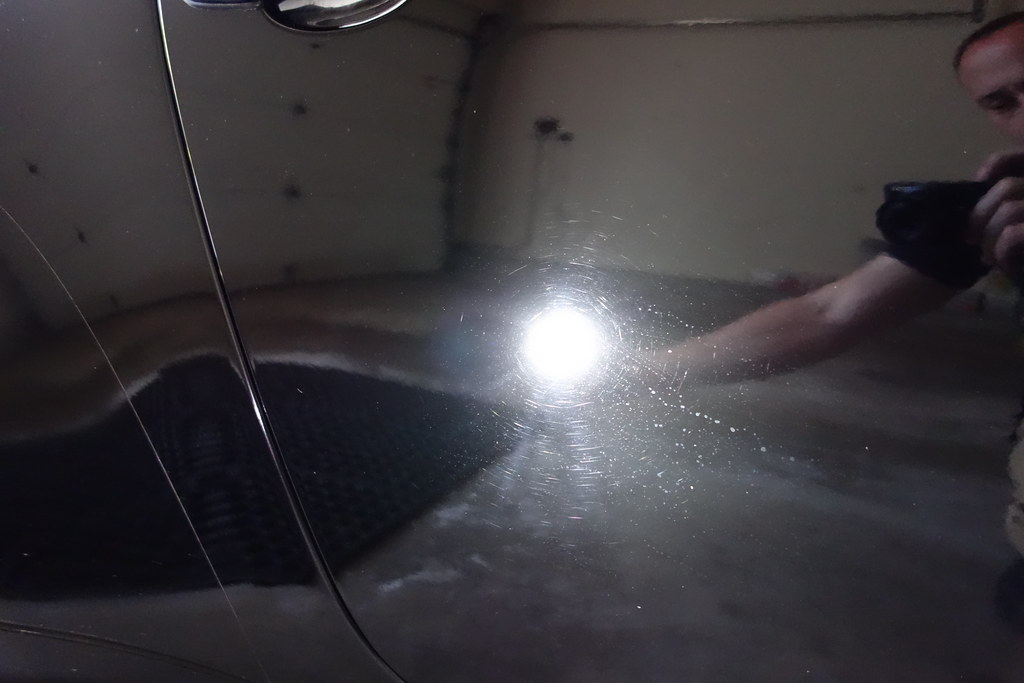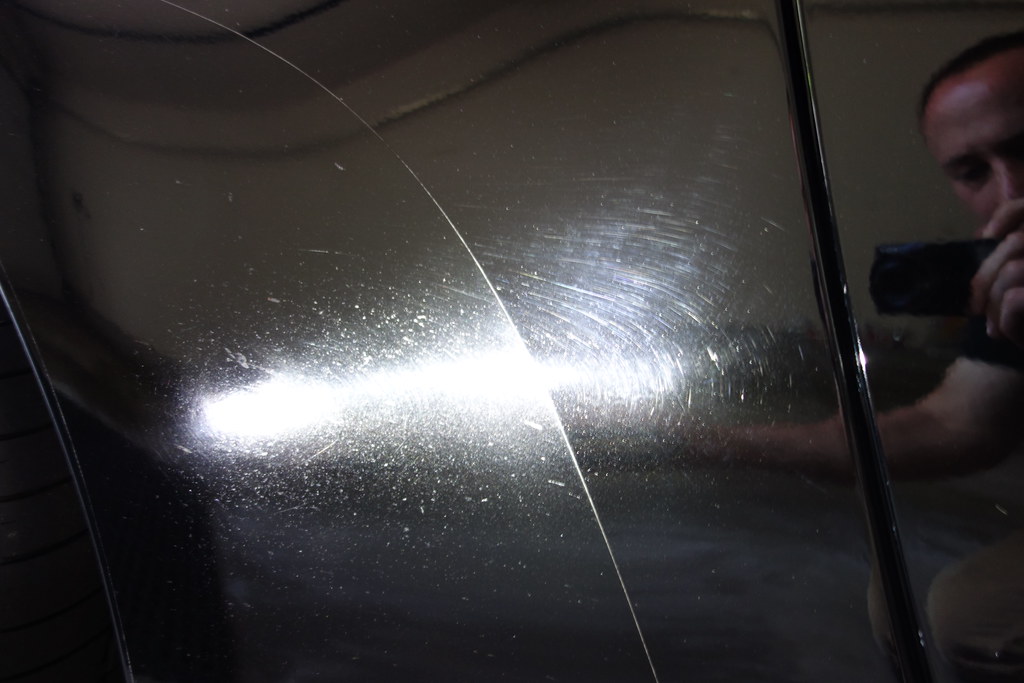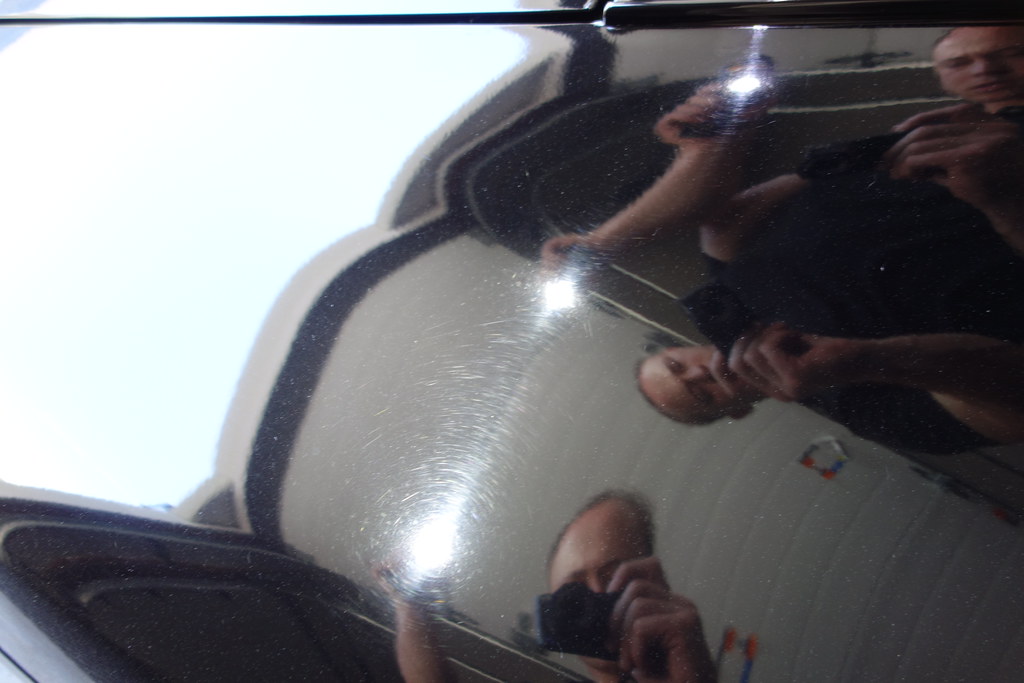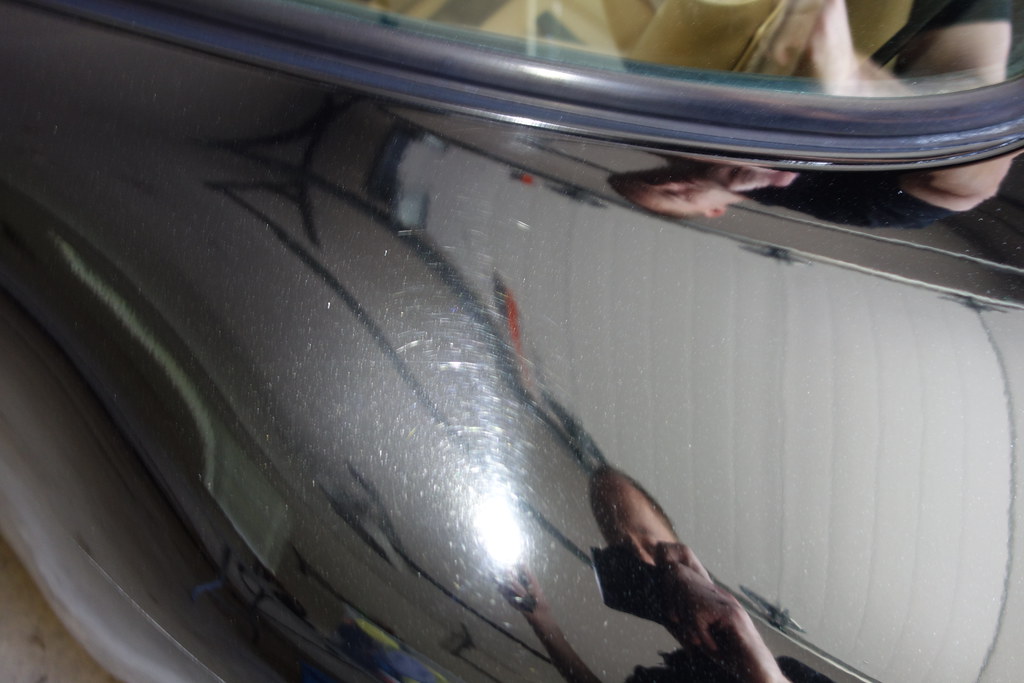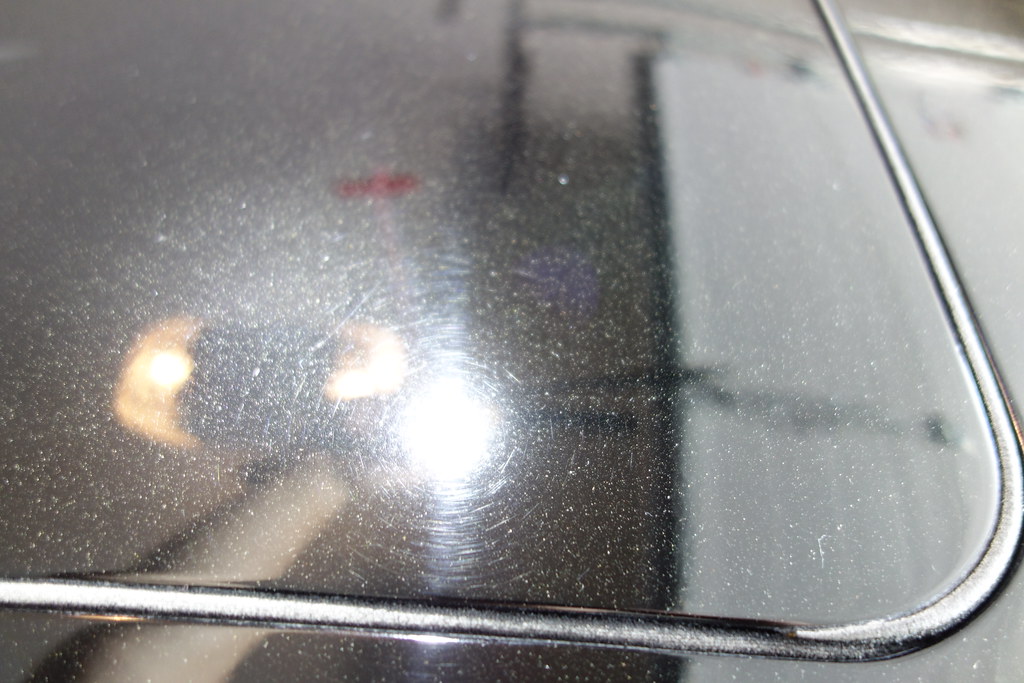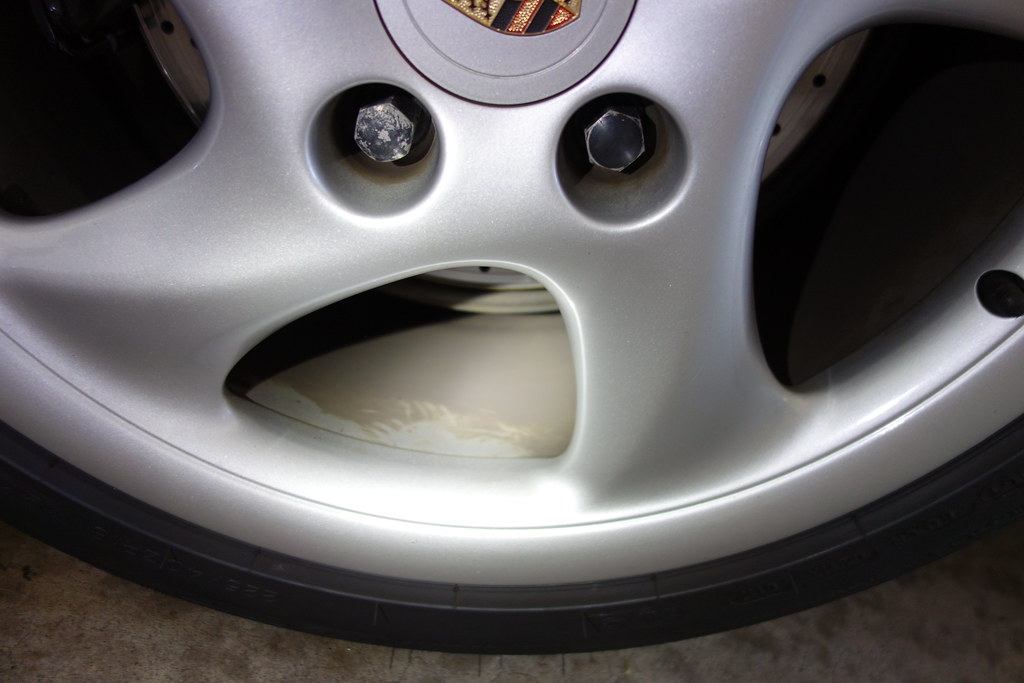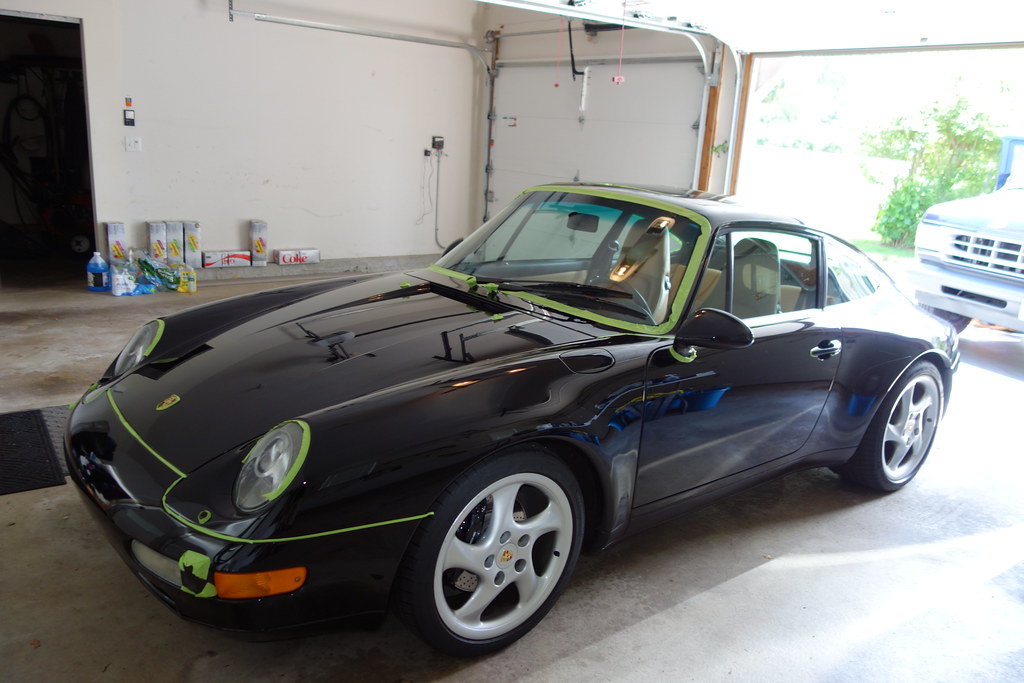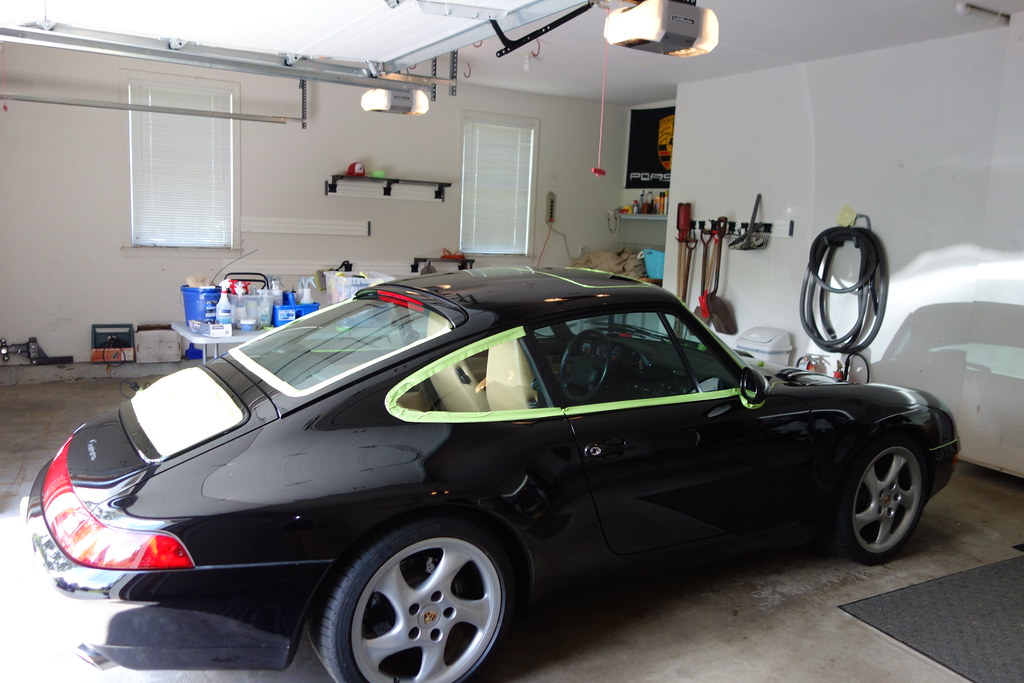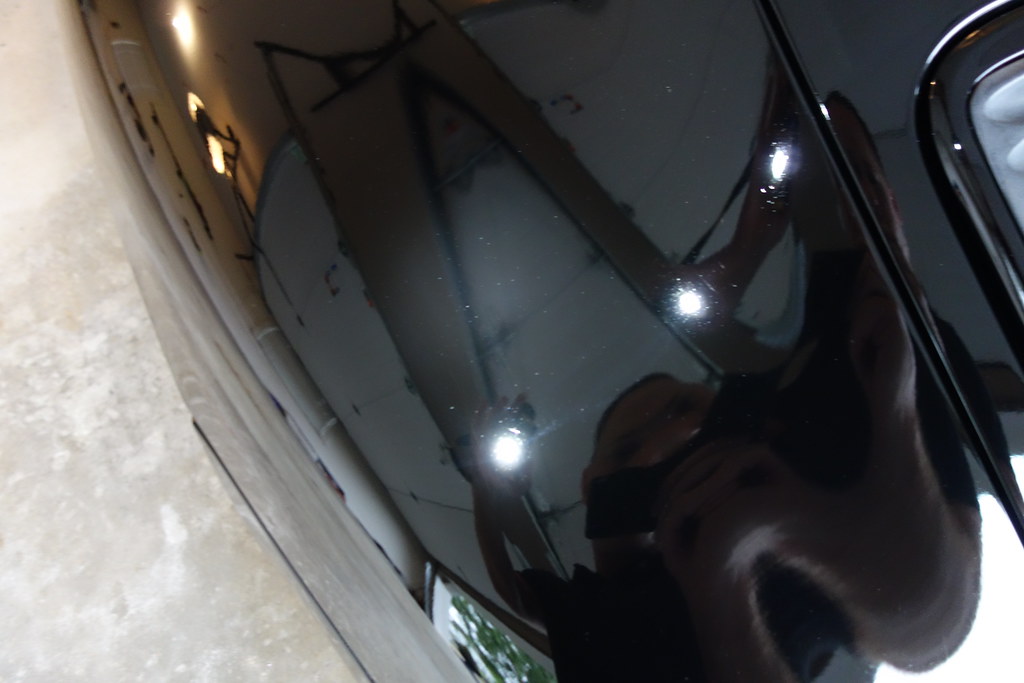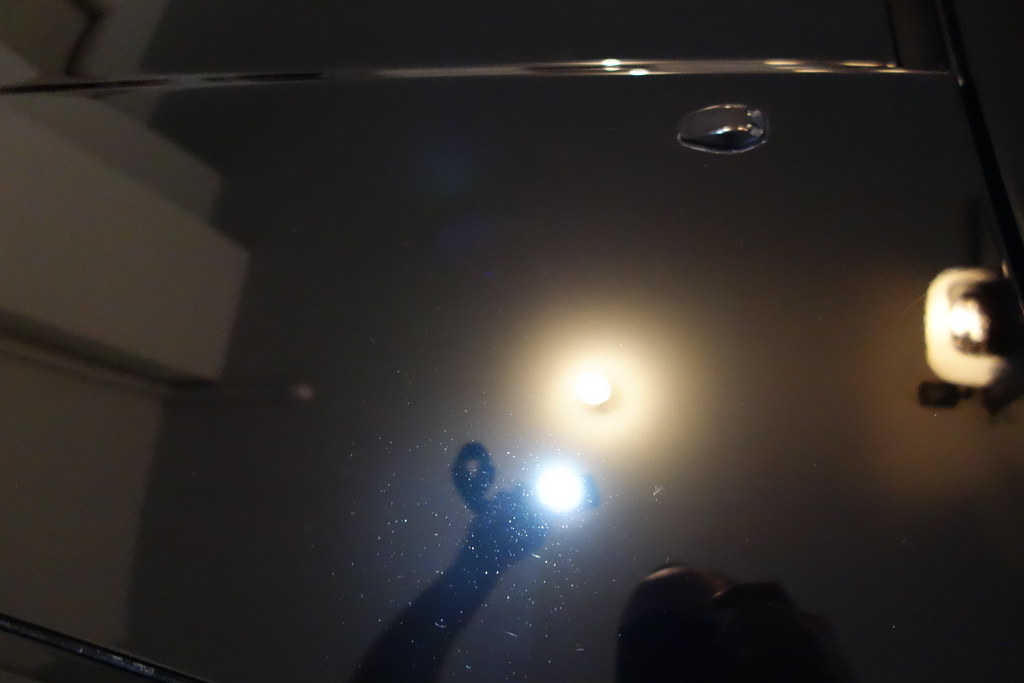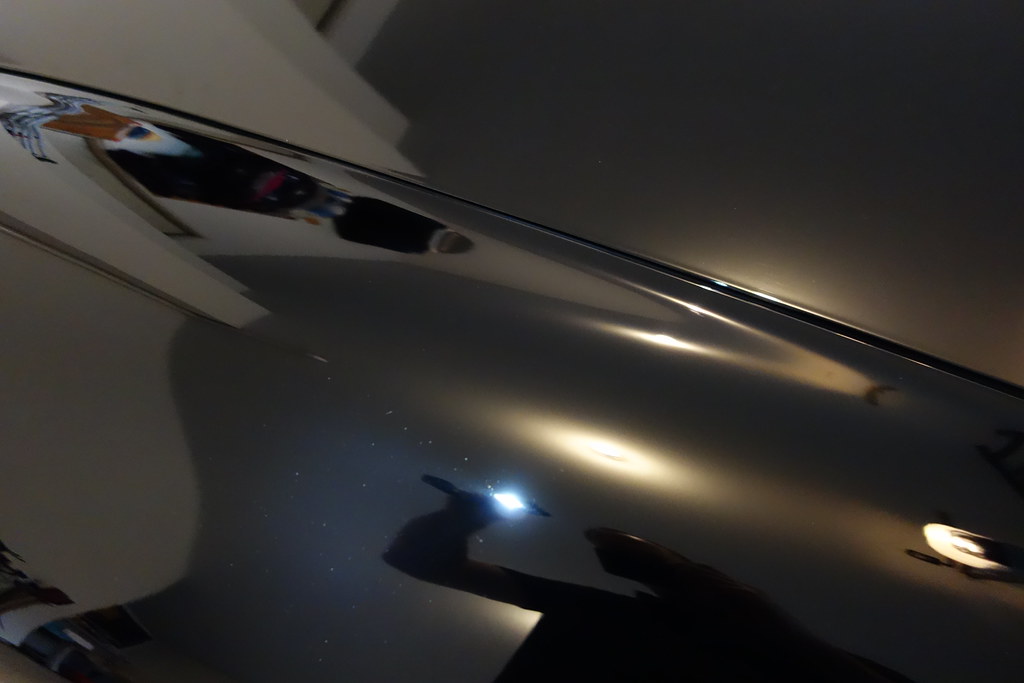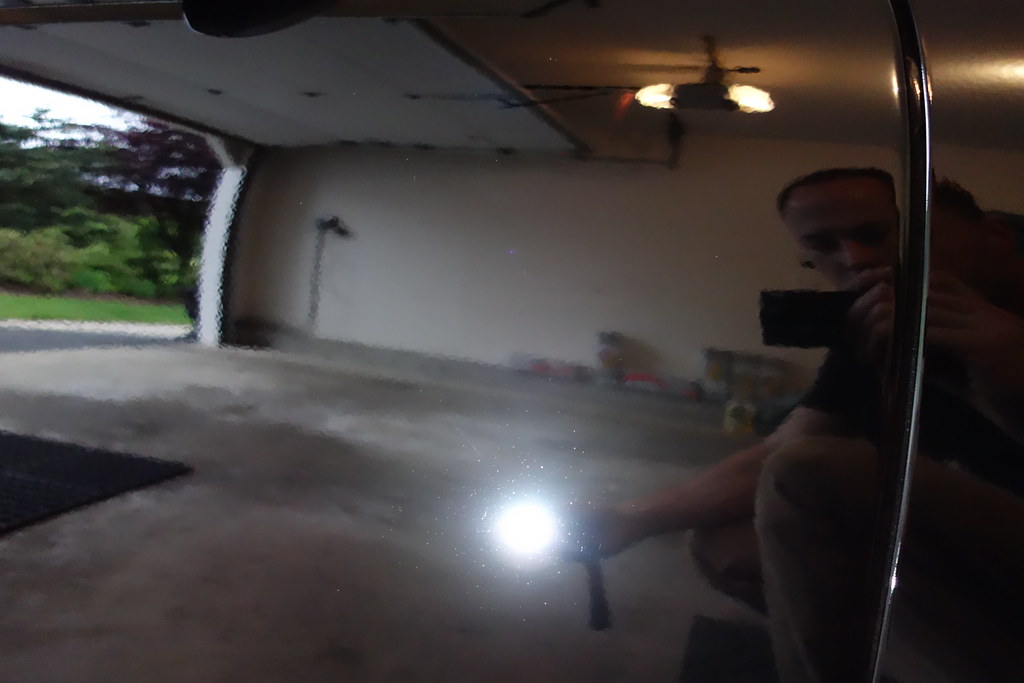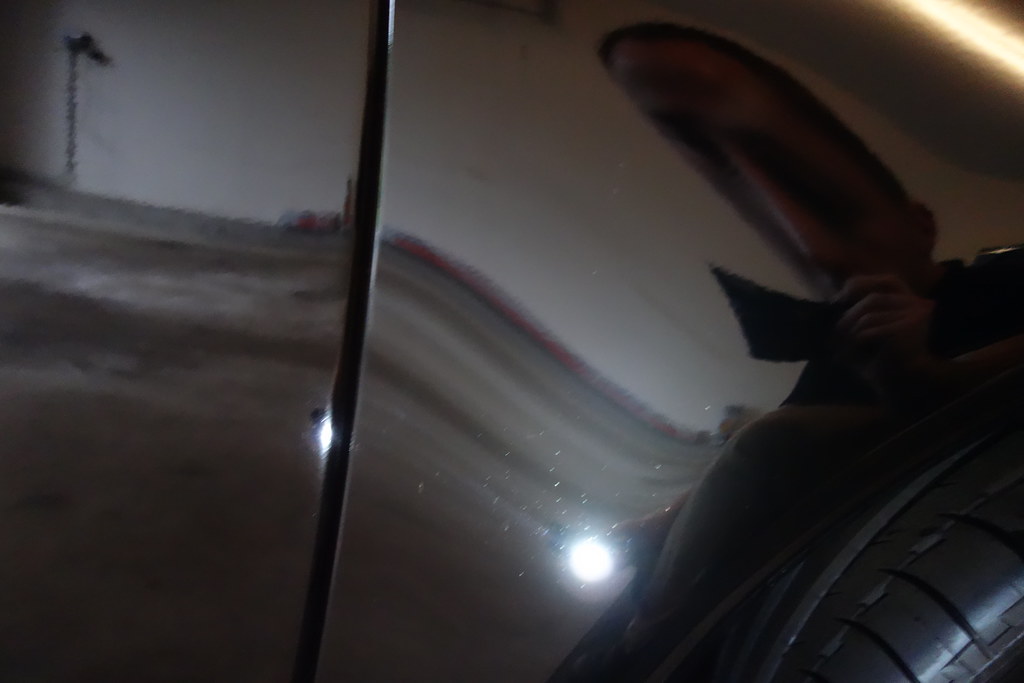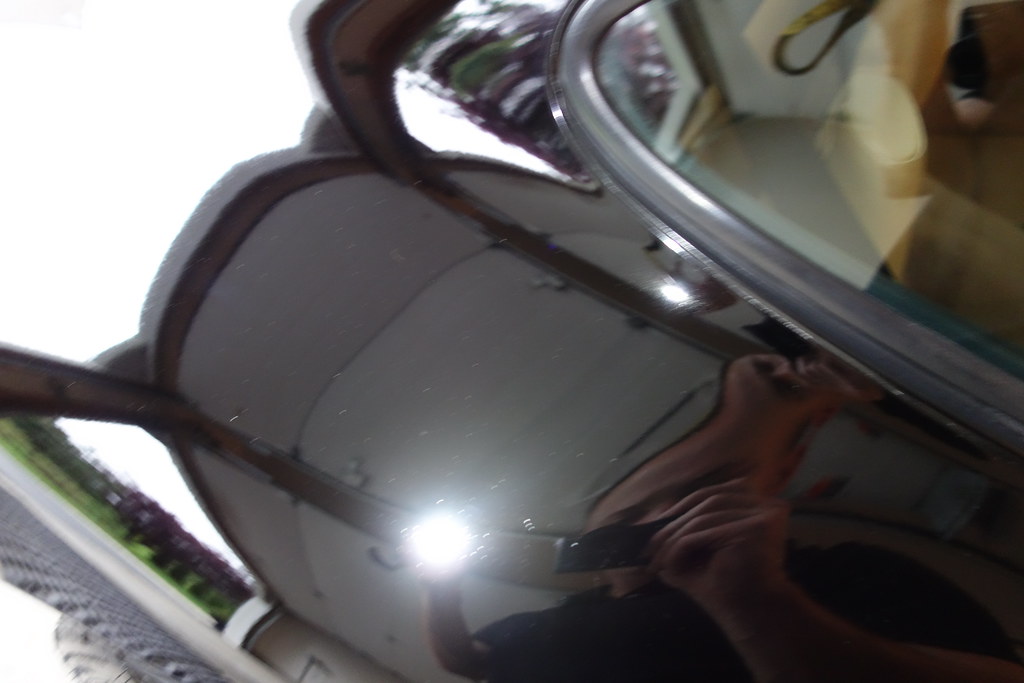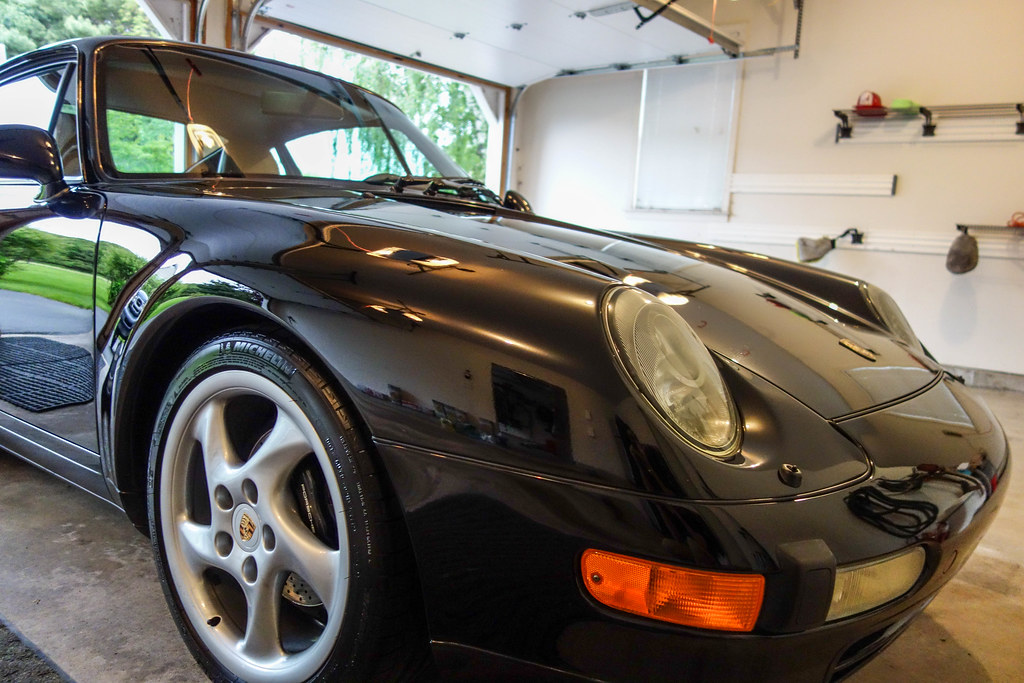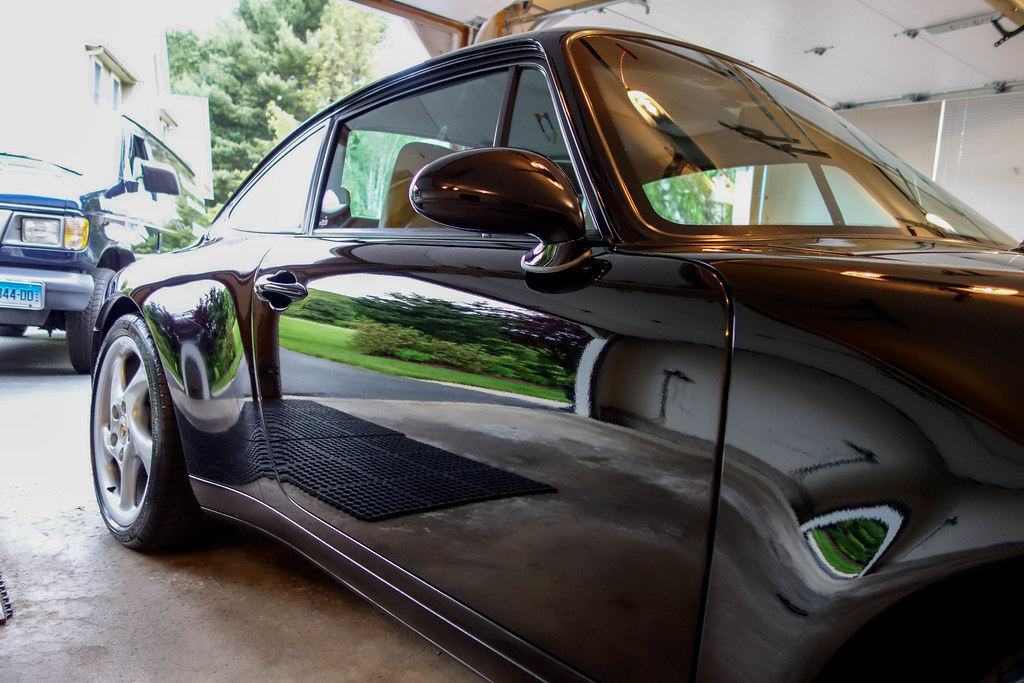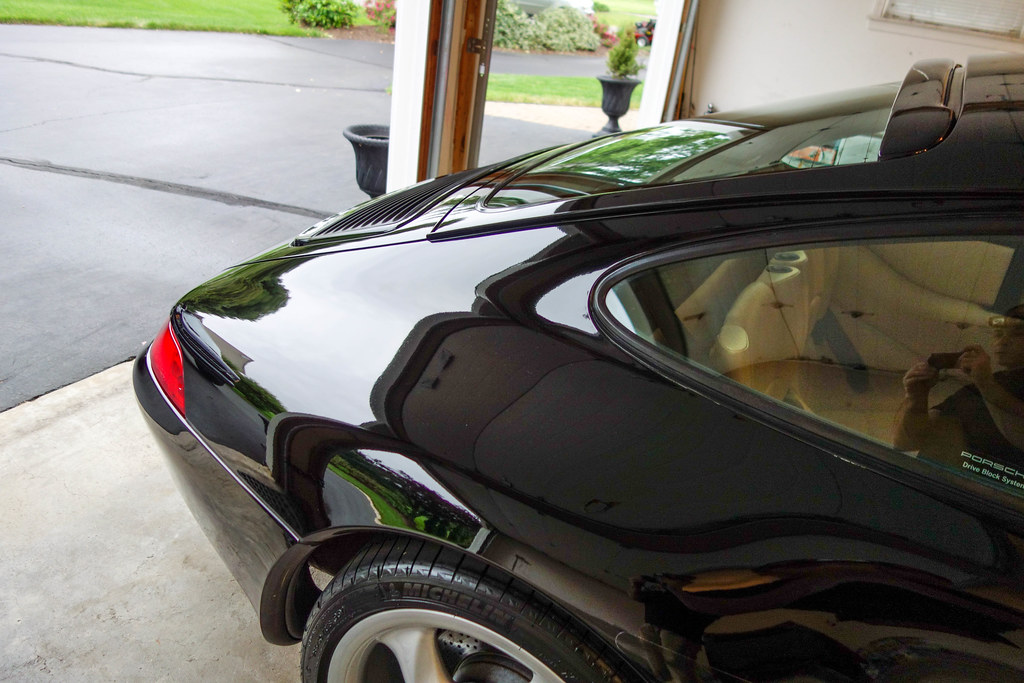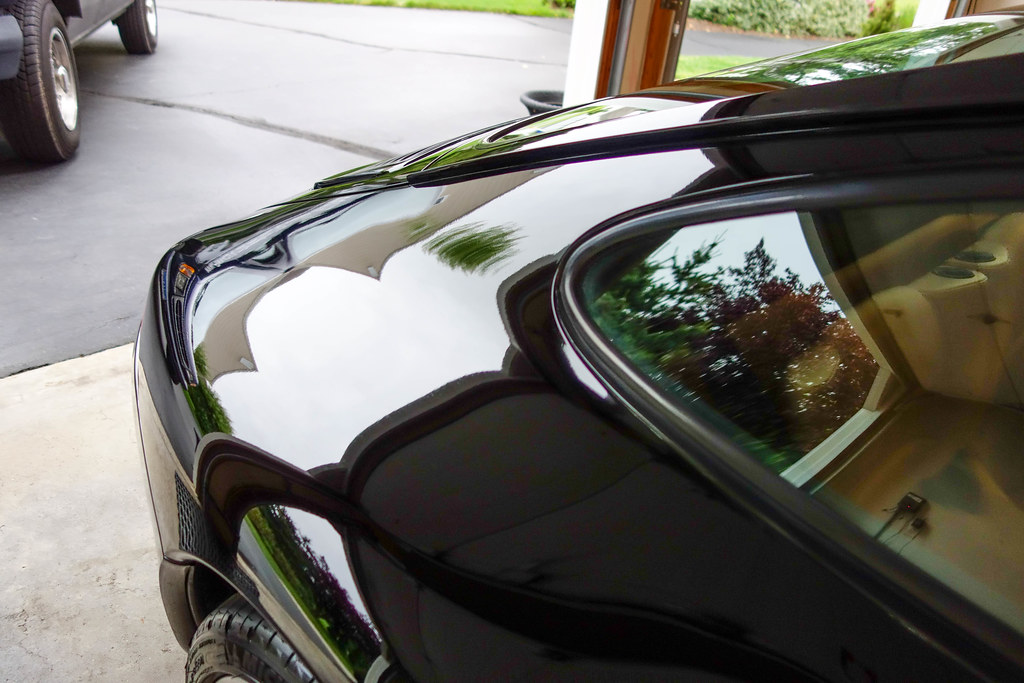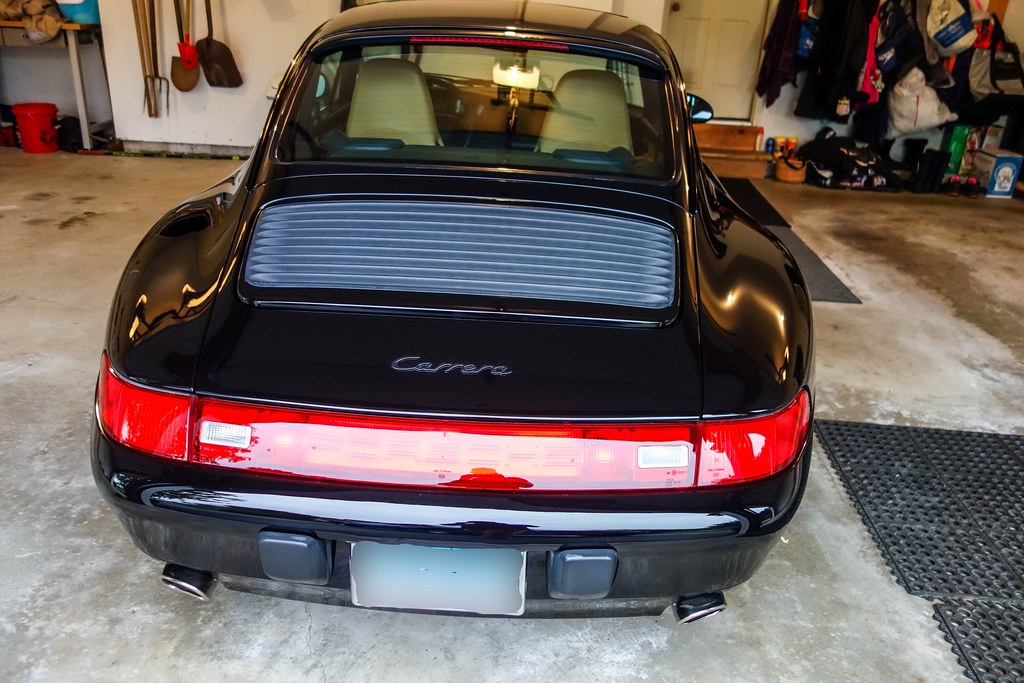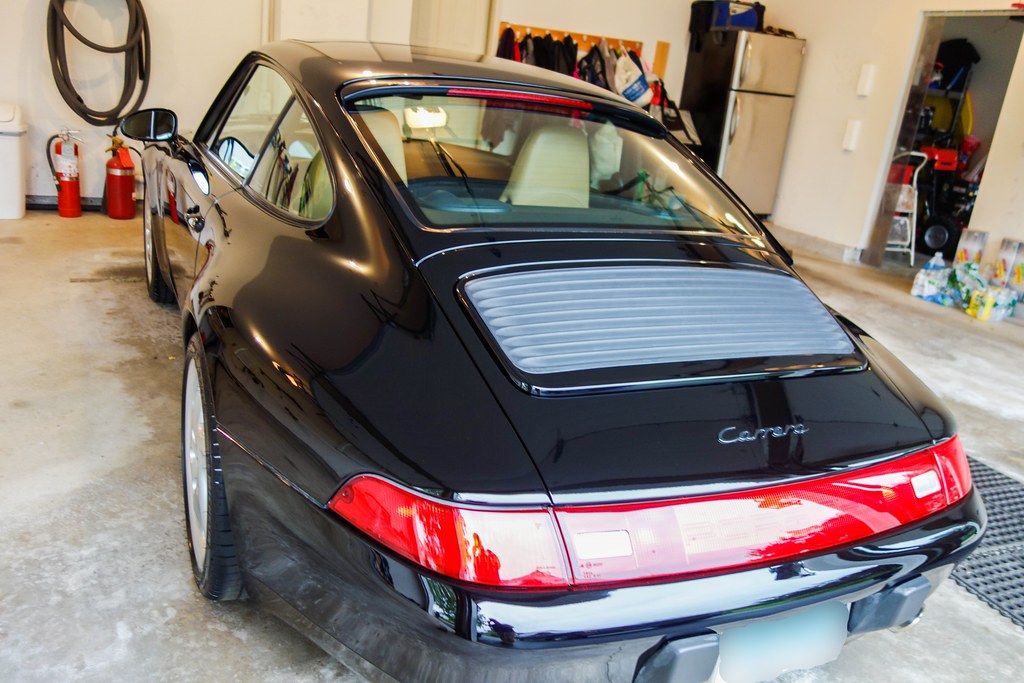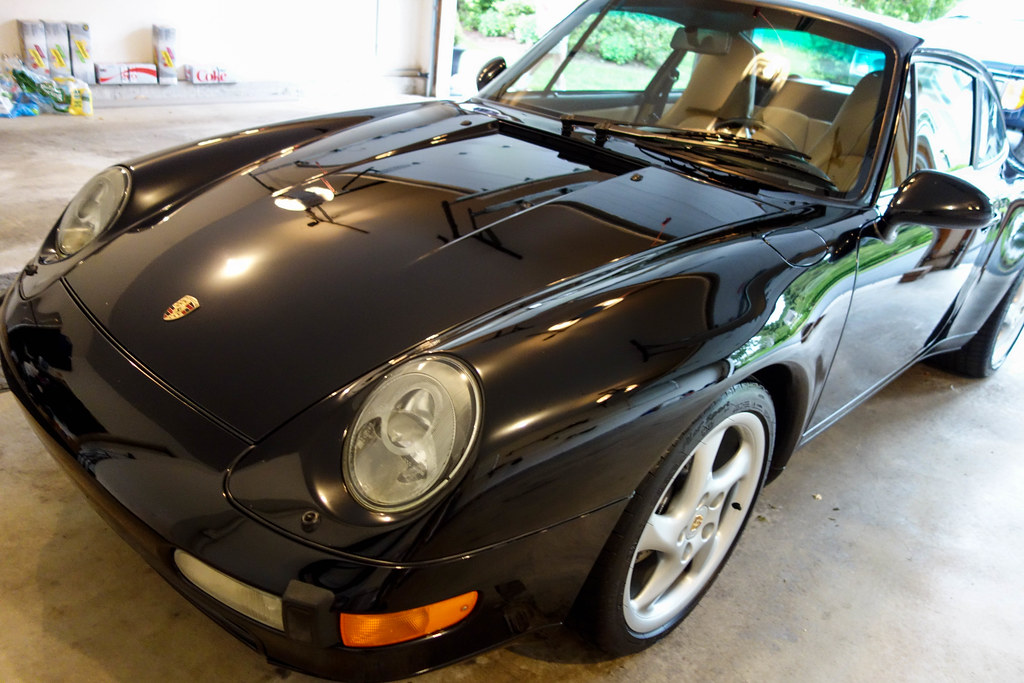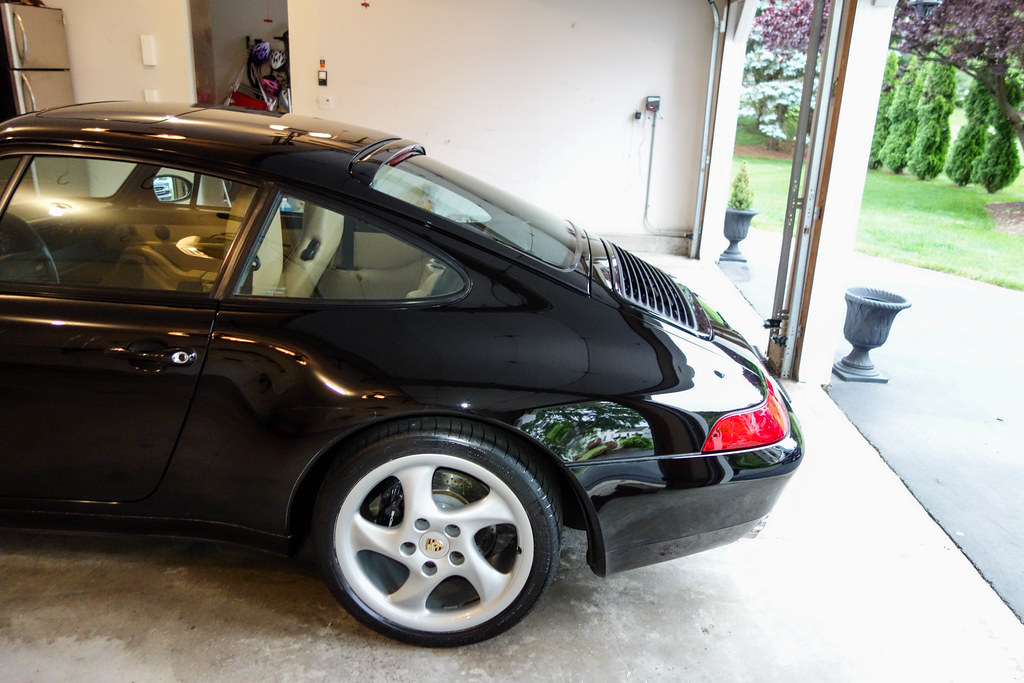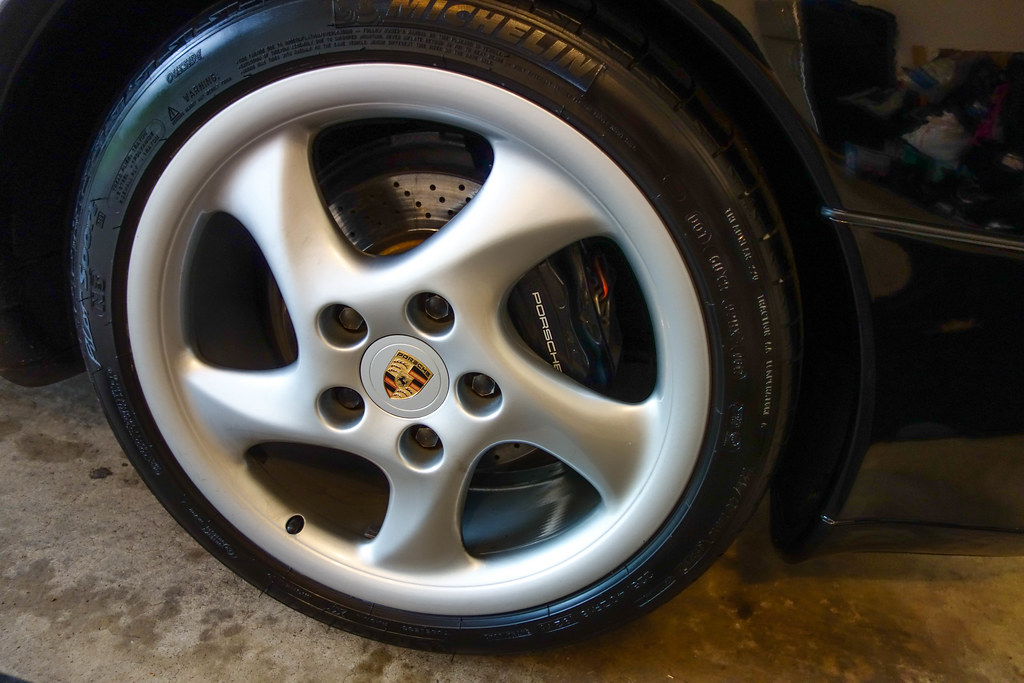This 1997 Porsche 911 in black was scheduled to appear in an upcoming parade for the Porsche Club of America’s Connecticut valley chapter. The owner had seen our work performed on other PCA members’ cars and contacted us about our paint correction services. Though this 911 was garaged and kept clean, it still suffered from moderate wash-induced marring that kept the black paint from looking its best under direct sunlight. The owner was looking for in improvement in the paint’s condition without removing too much clear coat, so a one-step correction was decided upon to remove ~80% of the defects and improve the shine and depth of the paintwork.
Before:
Here you can see moderate/heavy marring and some deeper defects on the fender. In spite of the severity of this marring, we would be able to remove a great deal of it with just a one-step correction due to the softness of the paint.
The hood also showed a good deal of marring along with some fine pitting from road debris:
Here the passenger fender shows the characteristic marring of the finish, plus a long horizontal scratch of shallow depth:
The rock guards also showed a good deal of marring and some discoloration. These areas would be polished more lightly than the rest of the paintwork as they are original to the car and even softer than the clear coat of the underlying paint:
The upper areas of the quarter panel were just as heavily marred as the lower:
The painted sunroof panel would need the same level of correction as the lower panels:
The wheel faces were clean but the barrels were in serious need of a thorough cleaning:
During:
After a wash with Optimum No Rinse, during which the wheels were cleaned with Optimum’s Power Clean at a 3:1 dilution ratio, the car was dried and then decontaminated with Clay Magic’s fine grade clay in preparation for polishing. After this the rubber moldings and trim were masked to prevent staining, and multiple pad and polish combinations were tested to achieve the maximum defect removal without leaving micro-marring (polishing haze). It was soon discovered that a mixture of Meguiar’s D300 and HD Polish used with a Lake Country HDO finishing pad would yield ~80%+ defect removal while leaving only a very small amount of micro-marring. This combination was used for the cutting phase in conjunction with the Rupes 21 MkII polisher, with the Rupes 75E spot polisher on tighter areas. After this, a quick refining step was performed using Lake Country black foam finishing pads and HD Polish, leaving the surface free of micro-marring and with greater depth and gloss.
The following pictures were taken early during the cutting phase of the correction:
After:
Here you can see faint traces of some deeper scratches and water spotting which remained, but the finish was greatly improved with over 80% of the defects removed:
The hood also corrected nicely, though nothing could be done for the pitting from road debris:
The lower portions of the passenger door and fender looked worlds better than their initial state:
The upper quarter panel likewise corrected nicely:
